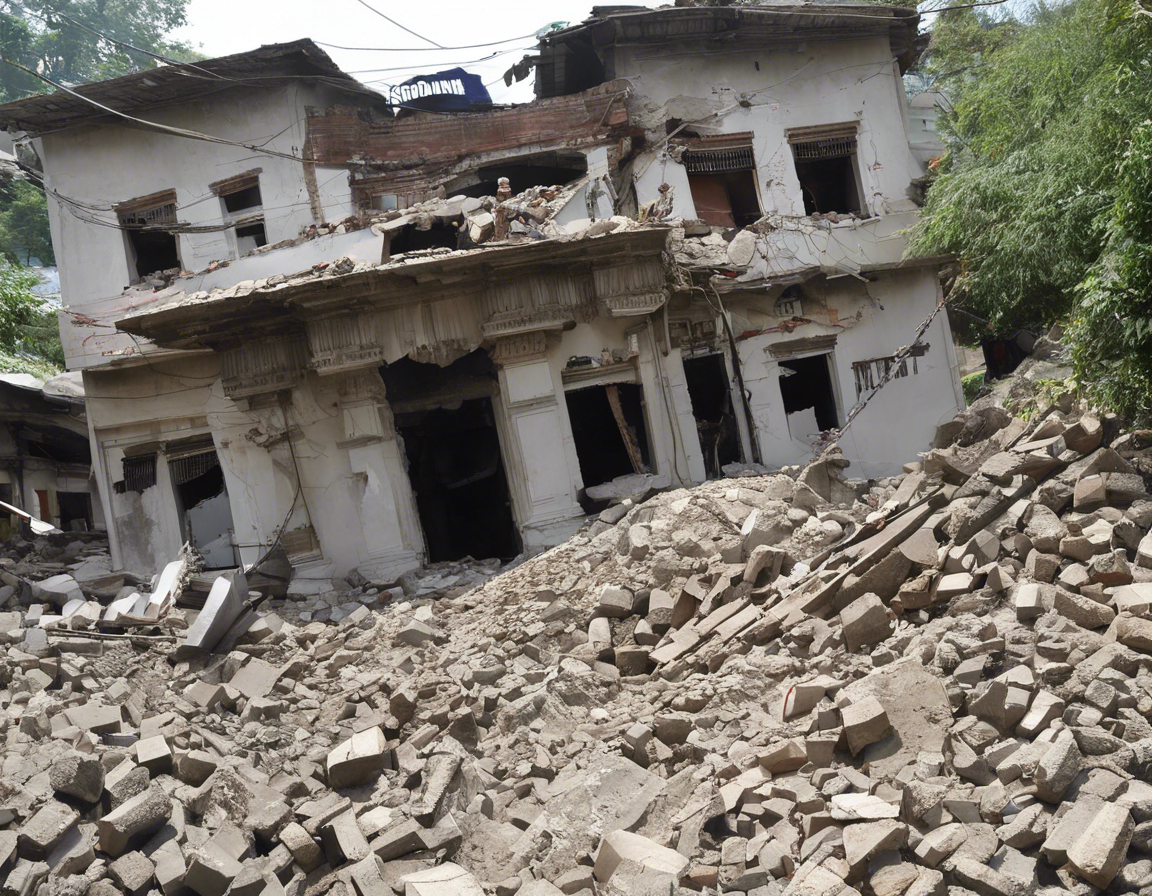On the 10th of March, 2023, the region of Seoni in India experienced a significant earthquake, sending shockwaves through the area and causing widespread damage. The Seoni earthquake had a magnitude of 6.5 on the Richter scale, leading to buildings collapsing, roads cracking, and general chaos in the affected areas. The earthquake’s epicenter was located near the city of Seoni, with tremors felt as far as neighboring regions. In the aftermath of this natural disaster, authorities, relief organizations, and residents are working tirelessly to assess the damage, provide aid, and rebuild the affected communities.
Understanding Earthquakes
Before delving into the details of the Seoni earthquake, it’s important to grasp the basics of earthquakes. An earthquake is the shaking of the surface of the Earth resulting from a sudden release of energy in the Earth’s lithosphere that creates seismic waves. These seismic waves cause the ground to shake, leading to the destruction of buildings, roads, and infrastructure in the affected area. Earthquakes can vary in magnitude, with stronger earthquakes causing more damage and casualties.
Seoni Earthquake: Impact and Aftermath
The Seoni earthquake had a profound impact on the region, with reports of buildings collapsing, roads becoming impassable, and widespread panic among residents. The immediate aftermath of the earthquake saw rescue teams rushing to the affected areas to search for survivors trapped under the debris. Medical teams were also deployed to provide emergency assistance to the injured.
The impact of the earthquake was felt not only in terms of physical damage but also psychologically, as residents grappled with fear and uncertainty in the wake of the disaster. The loss of homes, livelihoods, and, in some tragic cases, lives, has left a deep scar on the community.
Response and Relief Efforts
In the face of such devastation, a swift and coordinated response is crucial to providing relief to those affected by the earthquake. Government agencies, non-governmental organizations (NGOs), and volunteers have been working tirelessly to assess the damage, provide shelter, food, and medical assistance to the displaced, and begin the process of rebuilding.
Emergency shelters have been set up to house those who have lost their homes, while distribution centers have been established to provide essential supplies to the affected population. Medical teams are treating the injured and providing much-needed support to those traumatized by the disaster.
Earthquake Preparedness and Safety Measures
While earthquakes are natural disasters that cannot be prevented, there are measures that can be taken to mitigate their impact and ensure the safety of individuals and communities. Earthquake preparedness involves creating awareness about earthquake risks, conducting drills to practice safety procedures, and ensuring that buildings are constructed to withstand seismic activity.
Safety measures such as securing heavy furniture, locating safe spots within buildings, and having an emergency kit with essentials like water, food, and first aid supplies can make a significant difference in reducing casualties and injuries during an earthquake.
Frequently Asked Questions (FAQs)
-
What caused the Seoni earthquake?
The Seoni earthquake was caused by the sudden release of energy along a fault line in the Earth’s crust. -
How can I help the victims of the Seoni earthquake?
You can help by donating to reputable organizations involved in relief efforts, volunteering your time and skills, or spreading awareness about the situation. -
Is there a possibility of aftershocks following the Seoni earthquake?
Yes, aftershocks are common after a major earthquake and can continue for days, weeks, or even months following the initial event. -
Are earthquakes predictable?
While scientists can map out areas prone to earthquakes, predicting the exact time and magnitude of an earthquake remains a challenge. -
What should I do during an earthquake?
During an earthquake, drop down to your hands and knees, cover your head and neck, and hold on to sturdy furniture or fixtures until the shaking stops. -
How can I prepare for an earthquake?
You can prepare for an earthquake by securing heavy furniture, creating an emergency kit, and making a family emergency plan. -
What are the long-term effects of earthquakes?
The long-term effects of earthquakes can include psychological trauma, displacement, loss of livelihood, and economic hardship for affected communities. -
How are buildings designed to withstand earthquakes?
Buildings in seismic-prone areas are designed with features such as flexible foundations, reinforced walls, and shock absorbers to minimize damage during an earthquake. -
What role do emergency response teams play in earthquake situations?
Emergency response teams play a crucial role in providing immediate assistance to victims, conducting search and rescue operations, and coordinating relief efforts in the aftermath of an earthquake. -
How can communities come together to prepare for earthquakes?
Communities can come together by organizing drills, sharing information on earthquake preparedness, and establishing communication networks to support each other during and after an earthquake.
In conclusion, the Seoni earthquake serves as a stark reminder of the destructive power of natural disasters and the importance of being prepared to respond to such emergencies. As the affected region begins the long process of recovery and rebuilding, it is essential for individuals, communities, and authorities to work together towards creating a safer, more resilient environment that can withstand future seismic events.
